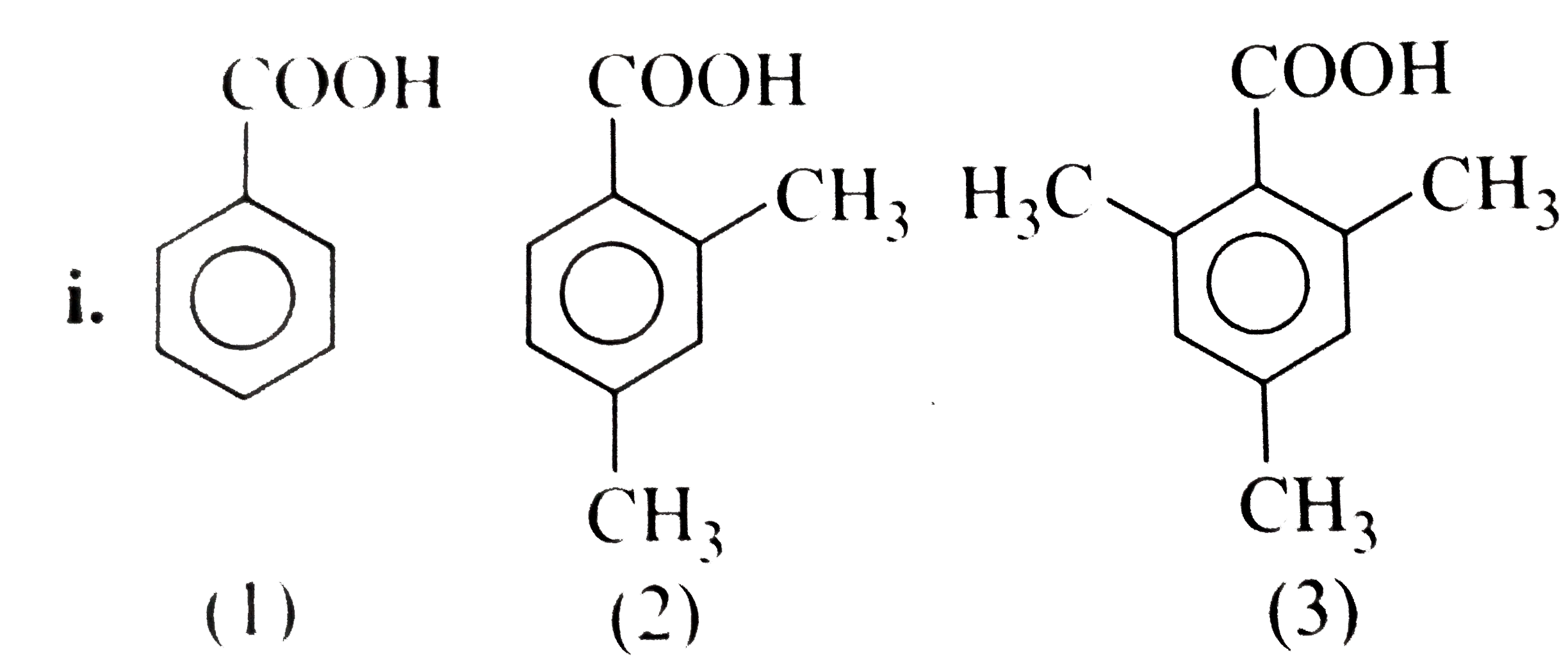and are treated with hydroiodic acid. The fragments after reaction obtained are
The correct Answer is:A
In . Attack of ion occurs at group giving However, in the reaction proceeds by mechanism and ion attack more stble ion giving . For more details , consult section 12.
Topper's Solved these Questions
- BOOK - DINESH PUBLICATIONCHAPTER - ETHERSEXERCISE - ASSERTION -REASON TYPE QUESTIONS14videos
ETHERS
- BOOK - DINESH PUBLICATIONCHAPTER - ETHERSEXERCISE - INTEGER ANSWER TYPE QUESTIONS7videos
ETHERS
- BOOK - DINESH PUBLICATIONCHAPTER - ETHERSEXERCISE - MULTIPLE CHOICE (MCQB)31videos
ETHERS
- BOOK - DINESH PUBLICATIONCHAPTER - ELECTROCHEMISTRYEXERCISE - ADDITIONAL NUMERICAL PROBLEMS FOR PRACTICE12videos
ELECTROCHEMISTRY
- BOOK - DINESH PUBLICATIONCHAPTER - GENERAL PRINCIPLES AND PROCESSES OF ISOLATION OF ELEMENTS EXERCISE - Brain Storming Multiple Chocie Questions7videos
GENERAL PRINCIPLES AND PROCESSES OF ISOLATION OF ELEMENTS
Similar Questions
Out of CH3CH2COCH2CH3 and CH3CH2CH2COCH3 which gives iodoform test ?
View Solutiona. Acid halides, anhydrides, esters and amides, all of them contain (C=O) group but none of them gives test for (C=O) group, i.e., they do not form oximes, hydrazones, and DNP derivatives, etc. Why?
b. Arrange the following in the decreasing order of nucleophilic addition.
i. (1)−CHO
(2)−COCH3
(3)−COOH
(4)−COCI
(5)−CONH2
(6)−COOCH3
(7)−COOΘ
ii. (1)CH3CHO
(2)CH3COCH3
(3)HCHO
(4)CH2H5CH2COCH3
iii. (1)CH3COCH3
(2)C6H5COCH3
(3)C6H5COC6H5
(4)C6H5CH2COCH3
iv. (1)C6H5CHO
(2)ρ−CH3.C6H4.CHO
(3)ρ−OH.C6H4.CHO
(4)ρ−NO2.C6H4.CHO
(5)ρ−CI.C6H4.CHO
v. (1)HCHO
(2)CH3CHO
(3)CH3COCH3
(4)CI3CCHO
c. Arrange the following in the increasing order of ease of hydrolysis.
(1)CCH3COOC2H5
(2)CH3COCI
(3)(CH3CO)2O
(4)CH3CONH2
d. Arrange the following in the increasing order of ease of acid-catalysed esterification of:
i.
ii. (1)CH3CH2COOH
(2)(CH3)2CHCOOH
(3)(CH3)3CCOOH
iii. (1)CH3CH2CH2OH
(2)CH3CHOHC2H5
(3)(CH3)2C(OH)C2H5
e. Arrange the following esters in decresing order of ease of alkaline hydrolysis.
i. (1)HCOOCH3
(2)CH3COOCH3
(3)(CH3)3CCOOCH3
(4)(CH3)2CHCOOCH3
ii. (1)CH3COOCH3
(2)CH3COOC(CH3)3
(3)CH3COOCH(CH3)2
(4)CH3COOCH2CH3
iii. (1)C6H5COOCH3
(2)ρ−CH3O−C6H4−CCOOCH3
(3)ρ−NO2−C6H4−COOCH3
(4)ρ−Cl−C6H4−COOCH3View Solution
Knowledge Check
- Question 1 - Select One
CH3OC2H5 and (CH3)3COCH3 are treated with hydroiodic acid. The fragments after reaction obtained are
ACH3I+HOC2H5,(CH3)3C−I+HOCH3BCH3OH+C2H5I,(CH3)3C−I+HOCH3CCH3OH+C2H5I,(CH3)3C−OH+CH3IDCH3I+HOC2H5,CH3I+(CH3)3C−OH - Question 2 - Select One
CH3OC2H5 and (CH3)3COCH3 are treated with hydriodic acid. The fragments after reaciton obtained are
ACH3I+HOC2H5,(CH3)3C−I+HOCH3BCH3OH+C2H5I,(CH3)3C−I+HOCH3CCH3OH+C2H5I,(CH3)3C−OH+CH3IDCH3I+HOC2H5,CH3I+(CH3)3C−OH - Question 3 - Select One
CH3COCH3 can be obtained by
AHeating acetaldehyde with methanolBOxidation of propyI alcoholCOxidation of isopropyI alcoholDReduction of propionic acid
CH3COCH3 can be converted to CH3CH2CH3 by the action of
View SolutionThe compounds C2H5OC2H5andCH3OCH2CH2CH3 are
View SolutionThe IUPAC name of CH3CH2CH2CH(CH3)COCH3 is
View SolutionCondiser the reactions,
(i) (CH3)2CH−CH2BrC2H5OH−−−−→(CH3)2CH−CH2OC2H5+HBr
(ii) (CH3)2CH−CH2BrC2H5O−−−−−−→(CH3)2CH−CH2OC2H5+Br−
The mechanism of reactions (i) and (ii) are respectively :View SolutionIUPAC name of CH3CH2COCH3 is _________.
View Solution

